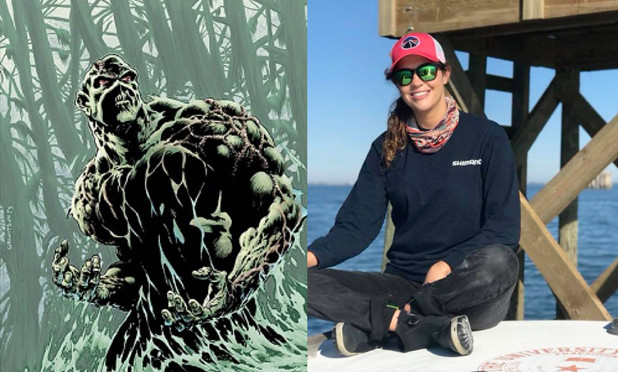 With the wind whipping through her hair, donning polarized sunglasses and a bucket full of probes, research associate, Kelley Savage is the opposite of who you’d imagine when you picture the slimy green, frightening, superhero Swamp Thing. Unlikely as it may seem, Kelley and Swamp Thing share many of the same characteristics. They are both fighting to protect the environment and to save marshes. Swamp Thing does it by destroying villains with his superpower to transform vegetation. Kelley does it by maintaining the Mission-Aransas Reserve’s SWaMP program at University of Texas Marine Science Institute.
With the wind whipping through her hair, donning polarized sunglasses and a bucket full of probes, research associate, Kelley Savage is the opposite of who you’d imagine when you picture the slimy green, frightening, superhero Swamp Thing. Unlikely as it may seem, Kelley and Swamp Thing share many of the same characteristics. They are both fighting to protect the environment and to save marshes. Swamp Thing does it by destroying villains with his superpower to transform vegetation. Kelley does it by maintaining the Mission-Aransas Reserve’s SWaMP program at University of Texas Marine Science Institute.
SWaMP is short for System-Wide Monitoring Program that is used in 29 wetlands and swamps throughout the nation to measure and understand the water quality and weather. By measuring water quality at all of these places around the US coast with the exact same set of procedures, scientists can understand short-term differences and long-term changes of marshes and swamps. With this knowledge, coastal managers can make informed and effective policies to sustain wetlands and swamps.
For the SWaMP network, Kelley deploys scientific instruments at four locations in the local wetlands to monitor the water quality including water temperature, salinity, turbidity (clarity), pH (acidity), oxygen content, chlorophyll content (a measure of the amount of algae) of the water. You can check it out in real time! https://cdmo.baruch.sc.edu/
 Instruments test the water every 15 minutes, 24 hours a day and 365 days a year. In addition to this useful data, the SWaMP program also measures: concentrations of nutrients and small planktonic organisms on a monthly basis; on an annual basis the network monitors sea level rise, and changes in sedimentation and vegetation communities.
Instruments test the water every 15 minutes, 24 hours a day and 365 days a year. In addition to this useful data, the SWaMP program also measures: concentrations of nutrients and small planktonic organisms on a monthly basis; on an annual basis the network monitors sea level rise, and changes in sedimentation and vegetation communities.
While the Swamp Thing and the SWaMP program use drastically different means of saving the wetlands and swamps they are both effectively trying to better understand and protect these systems that Texans value for recreation, fishing, and flood protection.
This research is supported by a grant from the National Oceanic and Atmospheric Administration.









